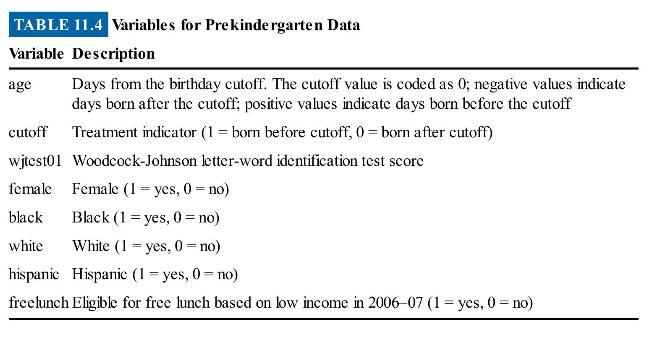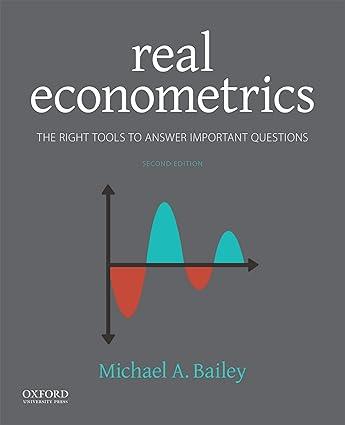Gormley, Phillips, and Gayer (2008) also used RD analysis to evaluate the impact of Head Start on
Question:
Gormley, Phillips, and Gayer (2008) also used RD analysis to evaluate the impact of Head Start on test scores in Tulsa. Children born on or before September 1,2001, were eligible to enroll in the program in the 2005-2006 school year, while children born after this date could not enroll until the 2006-2007 school year. The variable names and definitions are the same as in Table 11.4, although in this case, the data refers to 732 children just beginning the program in 2006-2007 (Head Start entrants) and 470 children who had just finished the program and were beginning kindergarten in 2006-2007 (Head Start alumni).

(a) Assess whether there is a discontinuity at the cutoff for the freelunch status, gender, and race/ethnicity covariates.
(b) Repeat the tests for covariate discontinuities, restricting the sample to a one-month (30-day) window on either side of the cutoff. Do the results change? Why or why not?
(c) Use letter-word identification test score as the dependent variable to estimate a basic RD model. What is the estimated effect of the preschool program on letter-word identification test scores?
(d) Estimate the effect of Head Start by using an RD specification that allows the relationship to vary on either side of the cutoff. Do the results change? Should we prefer this model? Why or why not?
(e) Add controls for lunch status, gender, and race/ethnicity to the model. Do the results change? Why or why not?
(f) Reestimate the model from part (e), limiting the window to one month (30 days) on either side of the cutoff. Do the results change? How do the standard errors in this model compare to those from the model using the full data set?
Step by Step Answer:

Real Econometrics The Right Tools To Answer Important Questions
ISBN: 9780190857462
2nd Edition
Authors: Michael Bailey





